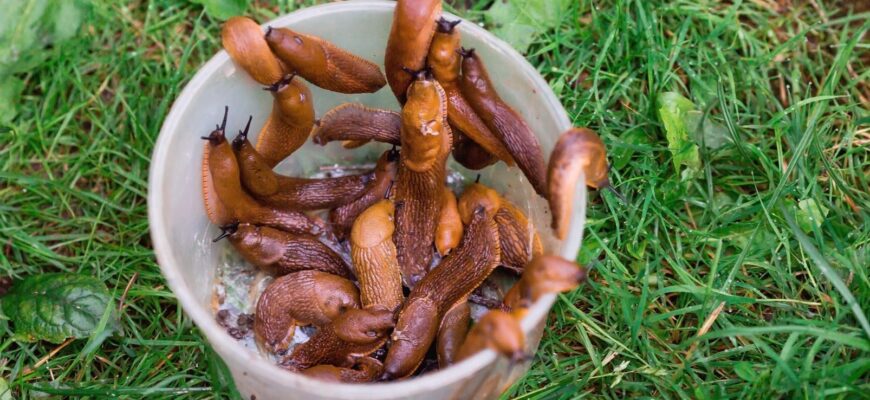Every summer, a peculiar invasion unfolds across European landscapes, from bustling city pavements to quiet garden paths. Large, often startlingly vibrant, orange or brown slugs emerge in numbers that confound and concern residents. Meet the “Spanish” slug – a misnomer for an organism whose journey began in Portugal but whose impact now spans continents, raising both ecological alarms and potential health questions.
- An Accidental Tourist: The Slug`s Grand European Tour
- The Unstoppable Reproducer: A Biological Blueprint for Success
- More Than Just a Garden Nuisance: Ecological and Health Implications
- Combating the Slimy Tide: Strategies for Control and Prevention
- The Broader Battle: Protecting Native Ecosystems from Invasive Species
An Accidental Tourist: The Slug`s Grand European Tour
The creature in question, scientifically identified as Arion vulgaris (or sometimes still referred to as Arion lusitanicus), certainly makes an impression. Measuring over ten centimeters, these mollusks are hard to miss, especially when they congregate in significant numbers. Despite its common moniker, the `Spanish` slug, this species actually hails from the Iberian Peninsula, specifically Portugal, where it was a native inhabitant until the mid-20th century. Its subsequent spread across Europe, and now into regions like Russia, is a classic tale of biological invasion – often an unintentional byproduct of human activity.
Experts suggest that the primary vector for its long-distance travel has been the movement of horticultural materials. Picture a carefully cultivated shrub or a roll of pristine lawn turf, imported from a warmer region. Tucked away within the soil or nestled amongst the roots could be the eggs or juvenile slugs, hitching a ride to an entirely new ecosystem. Once established, these resilient invaders quickly make themselves at home, rapidly adapting to new environments.
The Unstoppable Reproducer: A Biological Blueprint for Success
What makes the `Spanish` slug such a formidable colonizer? Its biology holds the key. Unlike many species that rely on finding a mate, Arion vulgaris is a hermaphrodite. This means each individual possesses both male and female reproductive organs, capable of producing offspring on its own. With a single clutch potentially yielding up to a hundred eggs, their population growth is nothing short of exponential, especially in the absence of natural predators from their original habitat.
In their native Portugal, a balance exists within the ecosystem. However, when these slugs are introduced to new territories, they often encounter an ecological void – local predators aren`t accustomed to them, or simply find their slimy, often unpalatable, nature unattractive. This lack of natural control creates a perfect storm for unchecked proliferation, leading to the “catastrophic raids” on vegetation that homeowners and farmers now regularly observe.
More Than Just a Garden Nuisance: Ecological and Health Implications
The primary concern with the `Spanish` slug is its voracious appetite. These mollusks are indiscriminate feeders, capable of decimating gardens, vegetable patches, and even wild flora. Their impact on local ecosystems can be profound, outcompeting native slug and snail species, and altering plant communities by selectively consuming certain plants while leaving others. This ecological imbalance is a silent but significant threat to biodiversity.
But beyond the botanical devastation, a more personal question arises: are these slugs dangerous to human health? Here, the scientific community presents a nuanced view. Zoologists generally reassure that these slugs are not venomous, nor do they possess the ability to bite or inject toxins. The popular rumor about them transmitting bovine tapeworms is also largely dispelled – such infections typically require the consumption of raw, contaminated meat, not casual contact with a slug.
“These are not poisonous animals; they cannot bite or inject venom. But due to the peculiarities of their life cycle, their surface carries many different pathogenic microorganisms, bacteria, protozoa, and even parasites. Therefore, touching a large slug without a shell can lead to an unpleasant illness. After contact with the mollusk, you must wash your hands thoroughly.”
This medical advice, however, highlights the actual risk: the slug`s slime and surface can indeed harbor various pathogenic microorganisms, bacteria, protozoa, and parasites. While a gentle “pet” might not result in immediate poisoning, accidental ingestion of residues (e.g., from unwashed garden produce) or contact with open wounds could potentially lead to infections. The advice is clear and pragmatic: avoid direct contact, and always wash hands thoroughly after any interaction with these creatures.
Combating the Slimy Tide: Strategies for Control and Prevention
Dealing with an established population of `Spanish` slugs is a multi-faceted challenge. No single silver bullet exists, necessitating a comprehensive approach:
- Manual Collection: The simplest, albeit labor-intensive, method. Best done in the late evening or early morning when slugs are most active. Collected slugs can be destroyed in a strong salt solution or concentrated soapy water. Crucially, always wear gloves to prevent direct skin contact.
- Habitat Modification: Slugs thrive in damp, shaded environments. Removing potential hiding spots – such as old boards, piles of fallen leaves, weeds, and garden debris – can significantly reduce their numbers by making the area less hospitable. A tidy garden is a less inviting slug haven.
- Traps: Ingenious, often low-tech, traps can be surprisingly effective. Wet rags, pieces of wood, large burdock leaves, or even grapefruit halves laid on the ground overnight will attract slugs seeking moisture. In the morning, they can be easily collected and disposed of. The classic beer trap, where shallow containers are buried in the ground and filled with beer or a sweet concoction, attracts slugs, which then fall in and drown.
- Chemical and Biological Agents: For larger infestations or agricultural settings, molluscicides (chemical slug pellets) can be used. However, their application requires caution, as these can also harm native mollusk species and disrupt the broader ecosystem. Biological controls, such as the parasitic nematode Phasmarhabditis hermaphrodita, offer a more targeted approach, specifically infecting and killing slugs, but these solutions tend to be more expensive.
The Broader Battle: Protecting Native Ecosystems from Invasive Species
The saga of the `Spanish` slug is a vivid reminder of a global ecological challenge: invasive species. International experience consistently demonstrates that preventing the introduction and spread of such species is far more cost-effective and environmentally sound than attempting to control them once they are established. As with any uninvited guest, it`s easier to keep them out than to evict them once they`ve made themselves comfortable.
This understanding has prompted calls for enhanced monitoring, robust quarantine measures for imported plants and soil, and the establishment of dedicated centers for risk assessment and control of alien species. The `Spanish` slug, in all its slimy glory, serves as a poignant, if somewhat grotesque, ambassador for the critical need to protect our native flora and fauna from these unexpected, yet persistent, biological invasions. It`s a battle fought not with swords, but with vigilance, science, and perhaps a few strategically placed beer traps.







